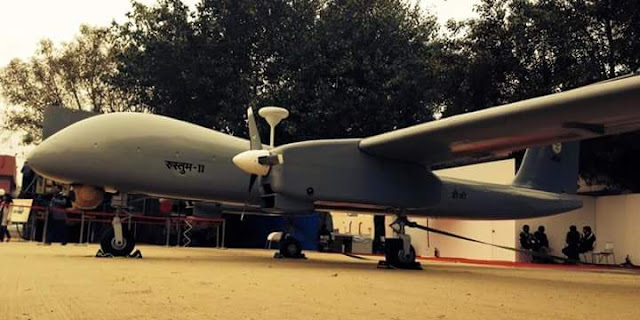El/M-2060P Airborne SAR Reconnaissance Pod.
The EL/M-2060P is a completely autonomous, self contained, all weather, day and night high-resolution reconnaissance radar system, specially designed for combat aircraft. It produces images that approach photographic resolution. It's capabilities are sustained in poor visibility conditions, under smoke and cloud cover, and against a wide variety of man made camouflage.
The ELM-2060P produces images that approach photographic quality and operate as a true all-weather, day and night sensor capable of penetrating, clouds, rain, smoke, fog and smog. The images produced on-board are transmitted, via a built-in datalink, to the advanced GES for interpretation and extraction of valuable Image Intelligence (IMINT) data.
The data is also recorded on-board for re-transmission or further off-line exploitation on the ground
The system consists of a detachable, pod mounted Synthetic Aperture Radar, externally carried by a combat aircraft, a Ground Exploitation System (GES), and a built in bi-directional data link.
The collected SAR imagery and data undergoes on-board, on-line, real time processing, and is transmitted to the GES for further automated interpretation. As an alternative or parallel mode, the collected data is recorded on board for retransmission or later interpretation on the ground.
The operation of the pod is highly automated, minimizing the load on the pilot. Thus even a single seater aircraft can perform the reconnaissance mission. The high performance combat aircraft platform, enables real time collection and interpretation of intelligence data over more than 50,000 square kilometers per hour.
The EL/M-2060P SAR pod is installed in a standard external store, attached to the centerline hard point of the aircraft. It does not alter the basic configuration of the aircraft, and does not degrade its capability to perform its original combat missions.
In this way any standard combat aircraft can be easily and cost effectively configured for the airborne reconnaissance mission that previously required specially dedicated, extremely expensive and vulnerable airborne platforms.
The EL/M-2060P SAR RECONNAISSANCE SYSTEM can be adapted to various high performance combat aircraft such as the Su-30 MKI, F-16, F/A-18, JAS 39, Tornado etc.
The concept, developed by ELTA, of adding SAR reconnaissance capability as a standard mission of regular combat aircraft is a break-through that has already created high interest in the defense community. As a result, an agreement to cooperate in the sale of ELTA's SAR reconnaissance system in the U.S. and other world markets was recently signed between ELTA and Lockheed Martin Tactical Aircraft Systems.
Features
- Range over 300 km
- All-weather reconnaissance
- Stand-off or Stand-in (penetration) missions
- Real-time, on-board SAR imagery generation
- Long ranges and wide area coverage
- Ground Moving Target Indication (GMTI)
- Efficient imagery exploitation and reporting
- Flexible mission planning, management and real-time mission re-tasking
- Self-sufficient autonomous system
- Straightforward installation on combat aircraft on existing hard points
- Minimal pilot workload for system operation
- Suited to operation and maintenance by the fighter squadron
Like Our Facebook Page AMCA - India's first indigenous stealth fighter for Daily Updates.


















































